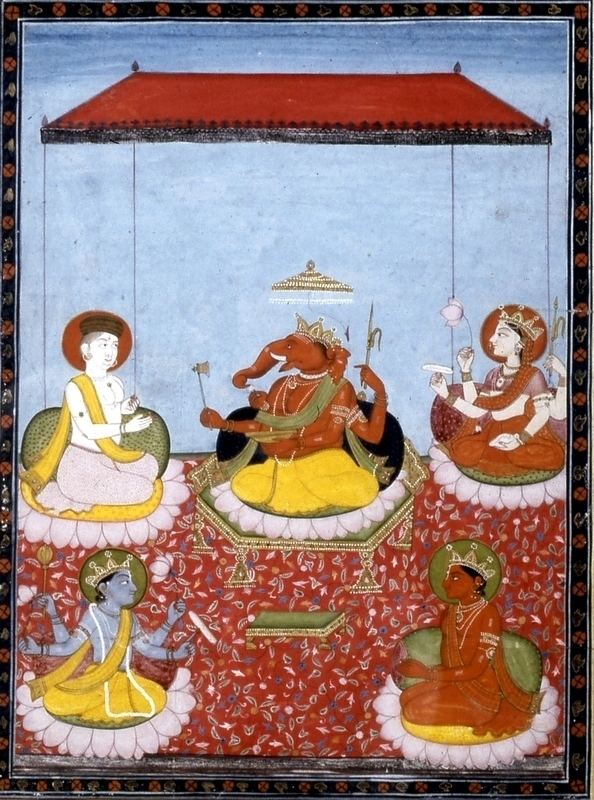 | ||
Panchayatana puja (IAST Pañcāyatana pūjā) is a system of worship ('puja') in the Smarta tradition of Hinduism. It consists of the worship of five deities set in a quincunx pattern, the five deities being Shiva, Vishnu, Devi or Durga, Surya and an Ishta Devata such as Ganesha or Skanda or any personal god of devotee's preference. Sometimes the Ishta Devata is the sixth deity in the mandala.
Panchayatana puja has been attributed to Adi Shankara, the 8th century CE Hindu philosopher. It is a practice that became popular in medieval India. However, archaeological evidence suggests that this practice long predates the birth of Adi Shankara. Many Panchayatana mandalas and temples have been uncovered that are from the Gupta Empire period, and one Panchayatana set from the village of Nand (about 24 kilometers from Ajmer) has been dated to belong to the Kushan Empire era (pre-300 CE). The Kushan period set includes Shiva, Vishnu, Surya, Brahma and one deity whose identity is unclear. According to James Harle, major Hindu temples from 1st millennium CE embed the pancayatana architecture very commonly, from Odisha to Karnataka to Kashmir; and the temples containing fusion deities such as Harihara (half Shiva, half Vishnu) are set in Panchayatana worship style.
Philosophically, the Smarta tradition emphasizes that all idols (murti) are icons of saguna Brahman, a means to realizing the abstract Ultimate Reality called nirguna Brahman. The five or six icons are seen by Smartas as multiple representations of the one Saguna Brahman (i.e., a personal God with form), rather than as distinct beings. The ultimate goal in this practice is to transition past the use of icons, then follow a philosophical and meditative path to understanding the oneness of Atman (soul, self) and Brahman – as "That art Thou".
Depending on the tradition followed by Smarta households, one of these deities is kept in the center and the other four corners of a square surrounding it. Either an iconic idol(s) or aniconic representation(s) or a combination for each deity is used. The five may be represented as simply as five kinds of stones called a Pancayatana puja set, or just five marks drawn on the floor. This arrangement is also represented in Smarta Pancayatana temples found in India, with one central shrine, and four smaller shrines at the corners of a square.
Panchayatana puja has predominantly been a tradition within Hinduism. However, the Udasis – a tradition that reveres the Guru Granth Sahib of Sikhism, also worship the five panchayatana deities.
